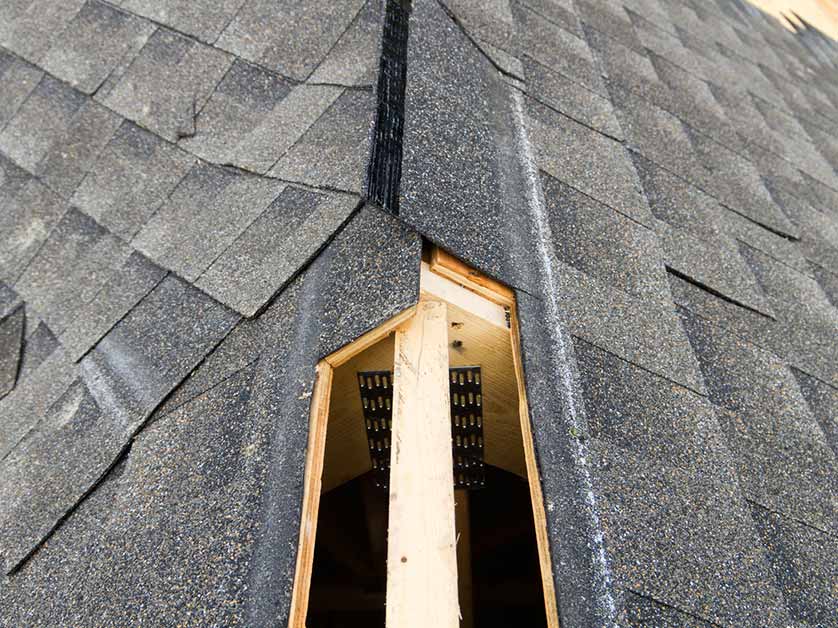Roof ventilation plays a crucial role in maintaining your home’s overall health and efficiency. However, many homeowners overlook its importance and underestimate how it can prolong a roof’s lifespan. In this post, trusted local roofer Bone Dry Roofing gives you an overview of roof ventilation systems.

How Roof Ventilation Works
Roof ventilation is the process of circulating air through the attic space of a building to regulate the temperature and humidity levels. Here’s how it works:
-
Air intake. Fresh air enters the attic space through the roof vent installed at the eaves or soffits of the roof. These vents are designed to allow air to enter while preventing the entry of rain, snow or pests.
-
Air circulation. The fresh air circulates through the attic space, carrying away heat and moisture. As warm air rises, it escapes through vents installed in the roof or at the ridge of the roof.
-
Exhaust. The warm, moist air exits through the roof vents, creating a natural flow of air from the intake vents to the exhaust vents. This circulation helps to prevent the buildup of heat and moisture in the attic, which can cause damage to the roof and insulation and lead to mold and mildew growth.
Why Need Proper Roof Ventilation
Proper roof ventilation offers several benefits, such as:
-
Energy efficiency. By facilitating proper airflow, adequate roof ventilation helps maintain a consistent indoor temperature, reducing the strain on your HVAC system and lowering energy bills.
-
Prolonged roof life. Effective roof ventilation prevents heat and moisture buildup in the attic, thus reducing mold growth, preventing wood rot and causing premature shingle deterioration.
-
Temperature regulation. Proper ventilation helps maintain a comfortable indoor temperature by circulating cool air in the summer and preventing moisture buildup during the winter.
Signs of Poor Roof Ventilation
Keep an eye out for these signs that indicate poor roof ventilation:
-
Ice dams. This kind of buildup occurs as a result of inconsistent roof ventilation. As snow on top of the roof melts and flows down the roof, it refreezes upon reaching the roof edge, causing ice buildup and icicles at the gutters.
-
Mold and mildew. If you notice mold or mildew growth in your attic, it may be a sign of poor ventilation that’s allowing excess moisture to accumulate.
-
High energy bills. Inefficient roof ventilation may cause your HVAC system to work harder, resulting in higher energy bills.
-
Damaged shingles. Roof ventilation issues can lead to shingle damage, such as curling or buckling, as a result of excessive heat and moisture in the attic.
Bone Dry Roofing Columbus in OH is an Owens Corning Platinum Preferred Contractor. This certification allows us to install a high-quality roof system that has all the necessary components, including an efficient ventilation system that helps prolong its lifespan. Call us at 614-602-5912 or fill out our contact form to request a free quote.
